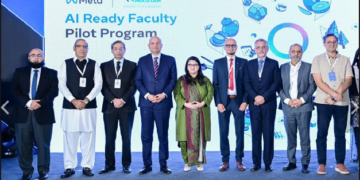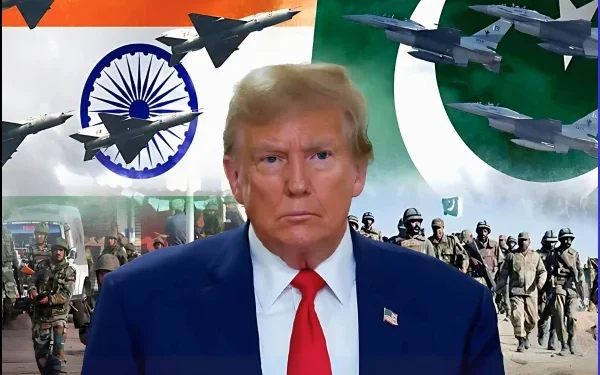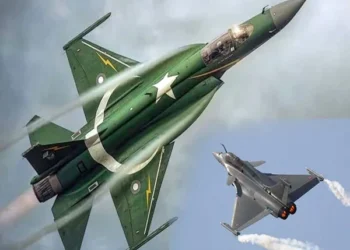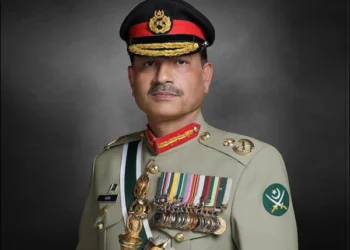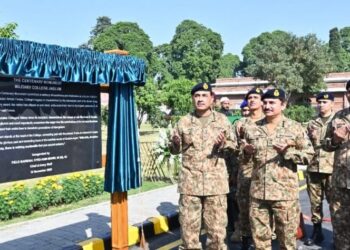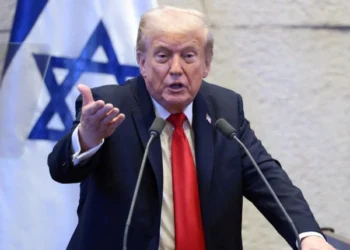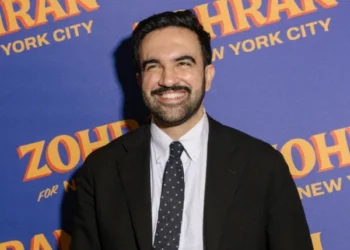In a significant and unexpected revelation, former US President Donald Trump stated that five Indian warplanes were shot down during a recent military conflict between Pakistan and India. This statement was made during his address to Republican members of Congress at the White House, where he also shared that the situation between the two nuclear-armed neighbors had reached dangerously heightened levels, almost triggering a full-scale war. Trump’s remarks have reignited global attention on the conflict and added weight to Pakistan’s claims regarding the downing of Indian aircraft, which India has long denied.
Trump’s Statement Shakes International Diplomacy
During his address, President Trump emphasized that, according to his understanding and intelligence inputs, five Indian fighter jets were taken down in the war. Although he did not categorically state that the planes were downed by Pakistan, his acknowledgment of the loss contradicts India’s continued denial of such an event.
Trump added, “The situation between India and Pakistan was escalating rapidly. We were on the verge of a nuclear conflict. I had to intervene quickly to de-escalate the crisis. Had we not acted in time, the region could have descended into chaos.”
His comments have brought a renewed focus to the importance of diplomatic intervention in preventing wars, especially in volatile regions like South Asia.
Origins of the Conflict: The Pahalgam Incident
The roots of the conflict trace back to April of the same year when an attack occurred in the Pahalgam area of Indian-occupied Kashmir. Unknown militants launched an assault that resulted in the deaths of 26 people. The Indian government was quick to blame Pakistan for orchestrating the attack, despite the absence of any concrete evidence.
Pakistan, in response, categorically denied involvement and offered to cooperate in an impartial, international investigation. However, India remained adamant, refusing to accept Pakistan’s offer and instead choosing to escalate tensions.
The United States condemned the attack on humanitarian grounds but refrained from taking sides, particularly rejecting India’s claims without independent verification.
India’s Aggression and Pakistan’s Defensive Response
The situation took a dramatic turn on May 7, when India, allegedly driven by political and military confidence, launched an attack on Pakistani territory. This act of aggression prompted a swift and calculated response from Pakistan’s military.
In the ensuing air conflict, Pakistan claimed to have shot down five Indian fighter jets, including at least one state-of-the-art Rafale jet. The confrontation served as a stern reminder of the capabilities and readiness of the Pakistan Air Force.
Despite video evidence, eyewitness accounts, and radar tracking, India consistently denied losing any fighter aircraft. In contrast, Pakistan maintained its stance and presented what it claimed to be compelling evidence of the downing.
Trump’s recent comments appear to validate Pakistan’s version of the events, suggesting that US intelligence had confirmed significant Indian losses.
India’s Retaliation Claims and Pakistan’s Rebuttal
India countered by stating that it had successfully shot down a Pakistani fighter jet during the conflict. However, Pakistan firmly refuted this claim, asserting that not a single one of its aircraft was brought down. To support this statement, Pakistan highlighted the lack of credible evidence from the Indian side.
Military analysts noted that while India did announce the downing of a Pakistani jet, no wreckage was ever presented, nor was there any verification from international observers. This added to the skepticism surrounding India’s version of the story.
Ceasefire Agreement and Trump’s Critical Role
The conflict began to cool down on May 10, following urgent diplomatic efforts by the United States. President Trump revealed that he personally reached out to both Indian and Pakistani leadership to urge for a ceasefire.
He warned both countries that failure to end hostilities could have serious repercussions, including the potential suspension of trade relations with the United States.
“I told both Prime Minister Modi and Prime Minister Khan that the world was watching and expecting responsible behavior. The United States was prepared to take significant economic measures had they not ceased hostilities,” Trump disclosed during his White House speech.
It was this strong and timely intervention that many credit for halting a potential full-scale war between the two nations.
The Kashmir Question: Trump Offers Mediation
In the aftermath of the ceasefire, President Trump made headlines once again by offering to mediate the long-standing Kashmir dispute between India and Pakistan. His proposal was unprecedented and, according to political analysts, well-intentioned given the volatile nature of the region.
Trump said, “I will work with both of you to find a solution to the Kashmir issue. The world cannot afford another war in South Asia.”
Pakistan Welcomes Mediation, India Rejects
Pakistan immediately welcomed the US President’s offer, viewing it as a positive development and a sincere effort to resolve a decades-long territorial conflict. The Foreign Office of Pakistan issued a formal statement praising President Trump’s diplomatic initiative.
“President Trump’s offer is a historic opportunity. We believe that an impartial and neutral mediator can bring both parties to the table and work towards a lasting peace in the region,” the statement said.
India, however, swiftly rejected the mediation offer. The Indian Ministry of External Affairs issued a counter-statement, asserting that Kashmir is a bilateral issue and does not require third-party intervention. This rigid stance further strained diplomatic relations between New Delhi and Washington for a brief period.
Ishaq Dar Recommends Trump for Nobel Peace Prize
In recognition of his efforts to defuse tensions and prevent a potential nuclear war, Pakistan’s then Deputy Prime Minister and Foreign Minister, Ishaq Dar, formally recommended Donald Trump for the Nobel Peace Prize.
In his letter to the Nobel Committee, Dar wrote, “President Trump’s prompt and effective intervention during the South Asia crisis is a testament to his commitment to world peace. His actions prevented large-scale devastation, and we believe he deserves global recognition.”
Although the nomination sparked mixed reactions internationally, it highlighted the critical role the former US President played during a sensitive time.
Lessons Learned: The Fragile Peace of South Asia
The 2025 conflict served as a grave reminder of how quickly tensions can escalate between India and Pakistan. The region, which houses nearly two billion people and two nuclear-armed nations, remains one of the most volatile in the world.
Experts agree that unresolved issues like Kashmir, cross-border militancy, and political mistrust continue to threaten peace in the subcontinent. The events of May 2025 underlined the urgent need for sustained diplomatic efforts and multilateral cooperation.
International organizations, including the United Nations, have once again emphasized the need for dialogue, restraint, and adherence to international law to avoid future conflicts.
Conclusion: Diplomacy Over Destruction
Donald Trump’s confirmation of the downing of five Indian aircraft adds a new layer to the Indo-Pak conflict narrative. More importantly, his proactive approach to peacebuilding showcased the power and necessity of international diplomacy.
While the scars of war remain fresh and unresolved political disputes linger, the hope for lasting peace rests on continued dialogue, transparency, and the involvement of responsible global leadership.
In a world teetering between conflict and cooperation, the Indo-Pak war of 2025 and its aftermath remain a powerful case study of how effective diplomacy can prevent devastation—and how critical it is for all stakeholders to prioritize peace over pride.














